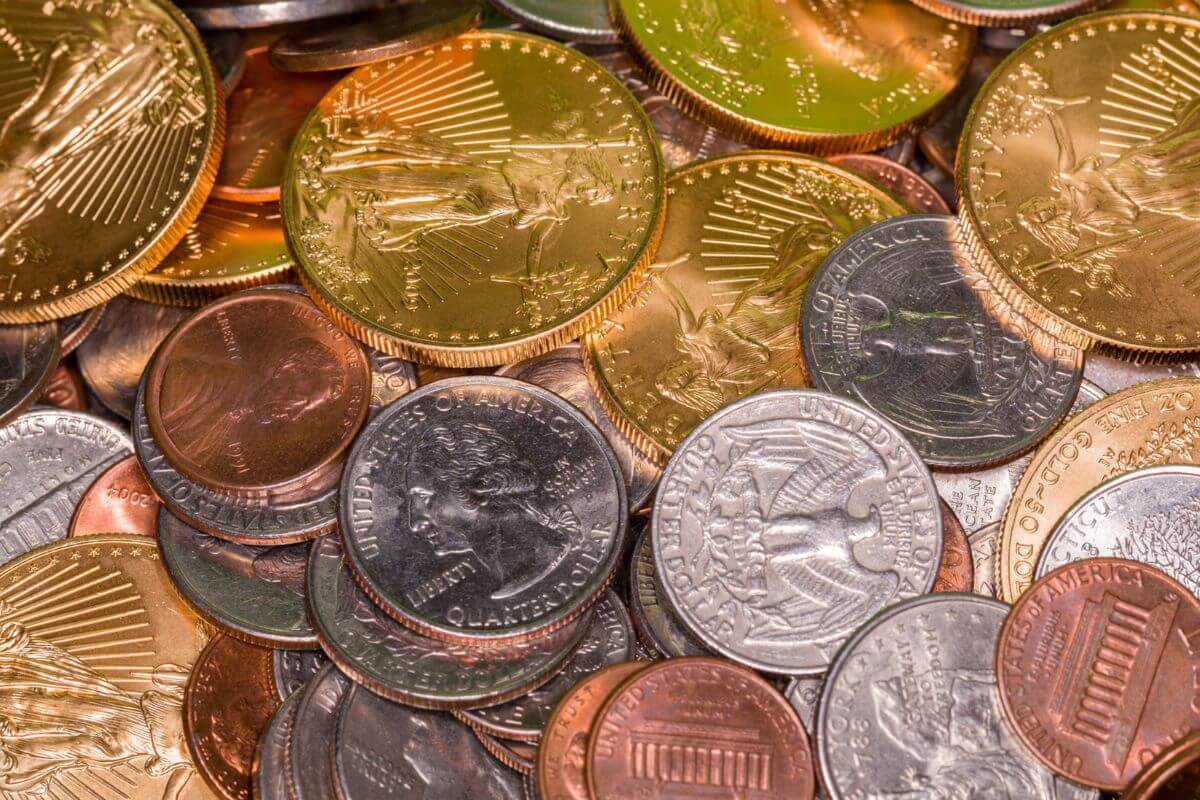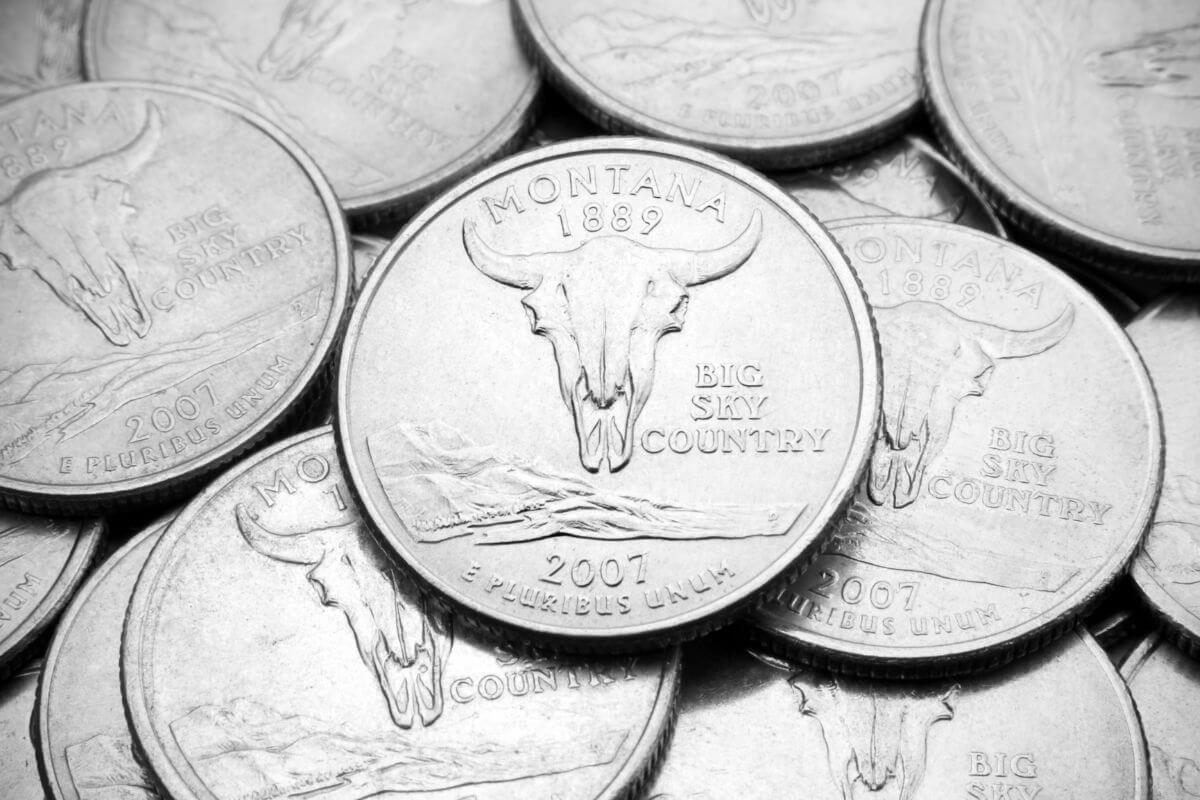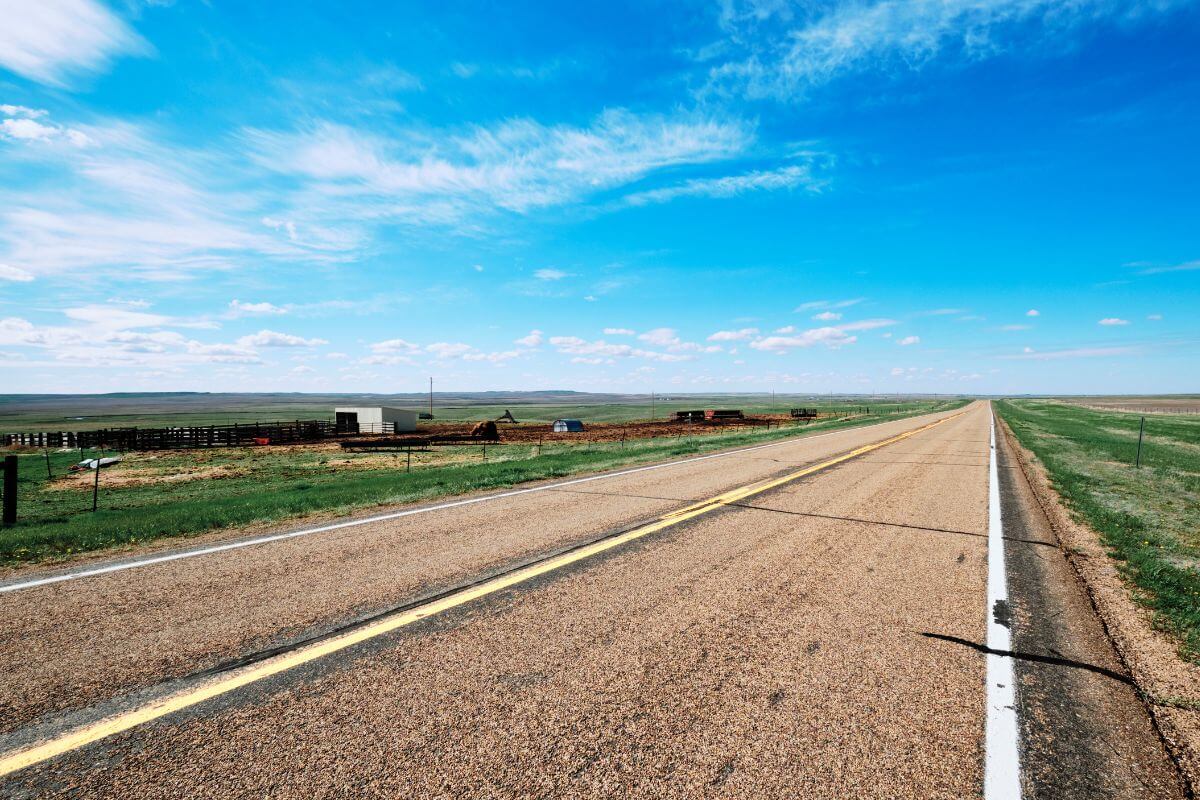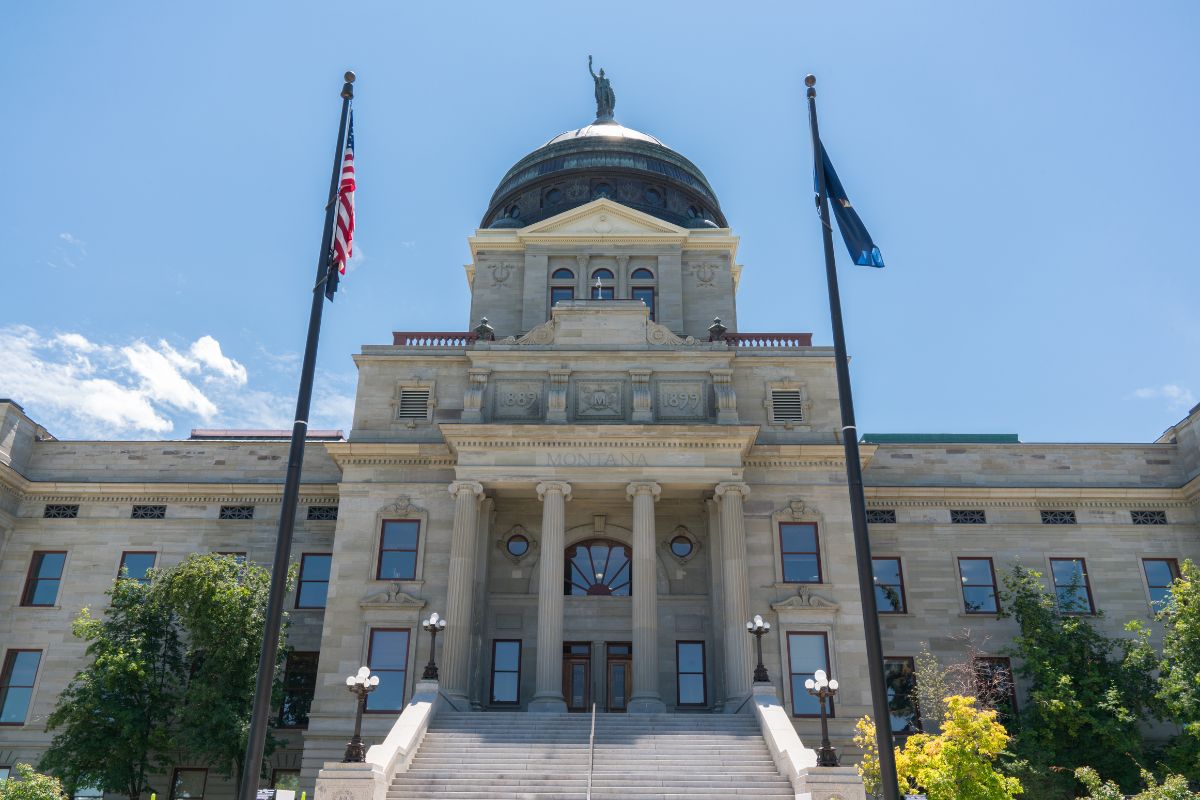Are you a collector looking to add a unique and powerful symbol to your collection? Or perhaps you’re a curious traveler searching for a piece of Montana’s rich history.
The Montana State Quarter is a treasure! This coin highlights the state’s landscape and Native American heritage, showcasing a bison skull symbol with rugged rock formations tapering towards the big sky.
In this article, I’ll give you an insider’s look at this fascinating coin’s design narratives, its connection to Montana’s Indian tribes, cattle ranchers, and fur trappers, and its value to coin dealers.
- Related article: Different Montana State Symbols
Let’s explore the Montana State Quarter: Tribute to Big Sky Country together.
A Brief Overview of the 50 State Quarters Program

The 50 State Quarters Program, which started in 1999, was an initiative by the United States Mint to commemorate all 50 states and their unique aspects.
For a span of 10 years, five new quarters were issued annually, following the sequence in which states approved the Constitution or became part of the Union.
The back of each quarter had a design that was related to the state, showcasing its history, culture, or unique features.
On one side of the Montana State Quarter, you can see the familiar picture of George Washington, which has been used on quarters since 1932.
In order to fit the designs of the different states, the words “UNITED STATES OF AMERICA,” “LIBERTY,” “IN GOD WE TRUST,” and “QUARTER DOLLAR” were moved to the same side as George Washington’s picture.
The famous bison skull symbol, rugged rock formations, and native traditions were just a few of the designs used in the program.
The 50 State Quarters Program was a massive success, generating huge interest among collectors and the general public, and adding a new dimension to coin collecting.
It provided a unique way to learn more about the history, culture, and geography of each state.
Montana State Quarter: Symbolism

When it comes to Montana’s State Quarter, the first thing that comes to mind is the bison skull sitting above the diverse landscape of “Big Sky Country”.
The bison skull symbolizes Montana’s Western heritage, capturing its abundance and challenges, reflecting the strong and enduring spirit of Montanans.
Montana’s State Quarter was designed and crafted by sculptor-engraver Don Everhart. It is the 41st coin introduced in the 50 State Quarters Program.
On the reverse side of the Montana Quarter, you can see the words “BIG SKY COUNTRY,” “MONTANA,” and “1889.”
These words represent Montana’s nickname, the name of the state, and the year Montana joined the United States, respectively.
The Montana Quarter represents the state’s exquisite natural scenery, specifically a mountain range with a flowing river in the foreground.
The massive sky occupying most of the design above the mountains captures Montana’s nickname, “Big Sky Country.”
Montana State Quarter: Historical Significance

The bison skull featured on the Quarter pays tribute to Montana’s Native American heritage and its intimate connection to the land.
The bison, one of Montana’s iconic species and a symbol of abundance and strength played a vital role in the lives of Native American tribes.
These tribes relied on the bison for sustenance, clothing, and shelter, and the animal held immense cultural and spiritual significance.
This connection is evident by the state’s nickname, “Big Sky Country.” The state is known for its wide-open spaces and low population density, resulting in expansive and unobstructed views of the sky.
The nickname represents the sense of freedom and vastness associated with the state’s open landscapes.
The Montana State Quarter’s historical significance lies in its representation of important events and cultures in the state’s history.
From Montana’s admission into the Union and its nickname “Big Sky Country” to the powerful symbol of the bison skull and the diverse landscape that attracted fur trappers, gold prospectors, and cattle ranchers, the Quarter serves as a reminder of Montana’s rich and vibrant past.
It highlights the state’s unique and fascinating history, making it a cherished item for both history buffs and coin collectors alike.
Montana State Quarter Final Thoughts

The Montana State Quarter stands out as an exceptional piece that reflects Montana’s grandeur and cultural richness.
The bison skull symbol takes us back to Montana’s Native American tribes who regarded the bison as a sacred symbol of life-sustaining power. The Quarter is a fitting tribute to this enduring reverence.
Montana’s history is defined by rugged landscapes and people who lived close to the land. Cattle ranchers, fur trappers, gold prospectors – all of them found a welcoming home here.
The Montana State Quarter has effectively captured this prairie heritage, telling the story of Montana’s past through this singular coin.
And of course, let’s not forget about Montana’s stunning nickname, “Big Sky Country.” There are few other places in the world that offer such vast and unencumbered landscapes.
Montana’s open skies symbolize freedom and endless possibility and this sentiment is reflected in every aspect of the Montana State Quarter.
The Montana State Quarter is a powerful memento, a tangible item that captures the spirit of Montana.
It brings to life the history of Montana through the beautifully crafted bison skull symbol and other design features.
Montana State Quarter FAQs
1. What Is the Point of State Quarters?
The State Quarters program was created to celebrate the fascinating history and diverse cultures of all 50 states by featuring special designs on coins.
It was also a very successful program that encouraged people to collect coins and generated a lot of interest in the field.
The program had a positive impact on the economy by increasing coin production and attracting tourists interested in collecting unique designs and learning about each state’s history and attractions.
2. How Many Montana Quarters Are There?
Montana’s Quarter was released in 2007 as the 41st coin in the series.
There were two mints that produced these Quarters, namely the Philadelphia Mint and the Denver Mint, with the former releasing 257,000,000 coins and the latter, 256,240,000.
There are therefore a total of 513,240,000 Montana Quarters in circulation.
3. What Are the Ten Rarest State Quarters?
Determining the rarest State Quarters is subjective, taking into account low mintages, collector demand, and scarcity in circulation.
According to a recent article in the Heritage Auctions Coin News newsletter, these coins are unique due to their specific mint marks and state names and are highly coveted by collectors.
The top ten rarest circulating State Quarters are as follows:
- 2008-D Oklahoma
- 2003-P Alabama
- 2004-P Iowa
- 2002-P Ohio
- 2003-P Maine
- 2008-P Oklahoma
- 2003-P Missouri
- 2003-P Illinois
- 2004-D Michigan
- 2004-P Wisconsin
4. Who Started State Quarters?
The State Quarters Program was created by the United States Mint under the guidance of the 50 States Commemorative Coin Program Act.
The act was signed into law by President Bill Clinton and overseen by then-Secretary of Treasury Robert Rubin, with input from state governors and coin designers.
5. Do They Still Produce State Quarters?
No, the State Quarters Program officially ended in 2008. From 1999 to 2008, the program released a series of commemorative Quarters featuring designs representing each of the 50 states in the US.
To learn more about Montana, keep your mind engaged with these enlightening articles:
- Montanas Recognized Colors
- Montana’s Soundtracks
- Montana Thistle Identification
- Tree Representing Montana
- https://www.usmint.gov/learn/coin-and-medal-programs/50-state-quarters
- https://www.usmint.gov/coins/coin-medal-programs/50-state-quarters/montana
- https://www.usmint.gov/news/press-releases/20070129-montanas-big-sky-country-quarter-launched-in-helena
- https://portal.ct.gov/DOB/Consumer/Consumer-Education/Connecticut-Commemorative-Quarter-Dollar

